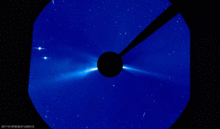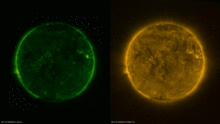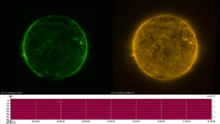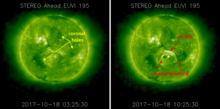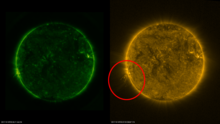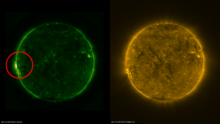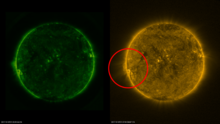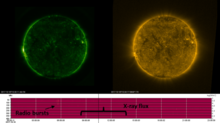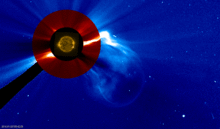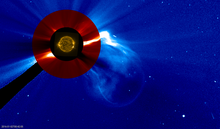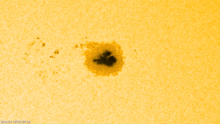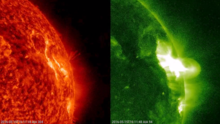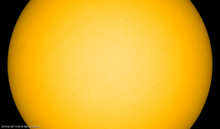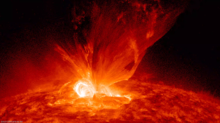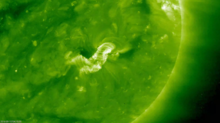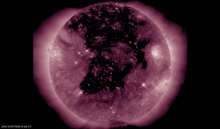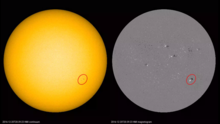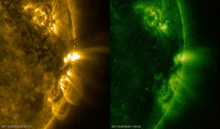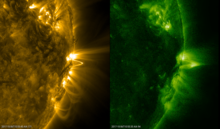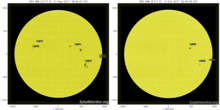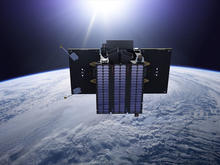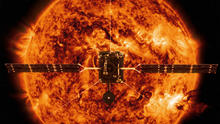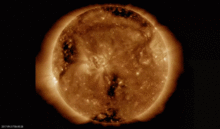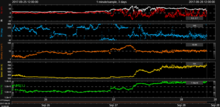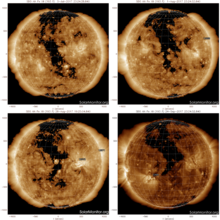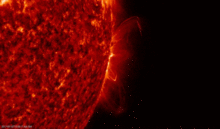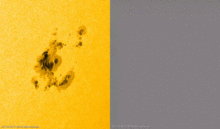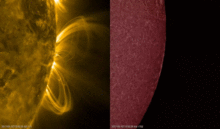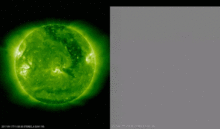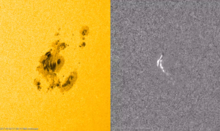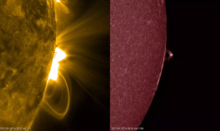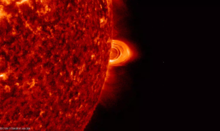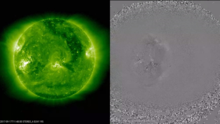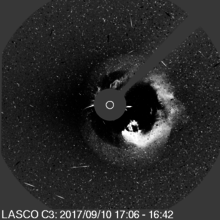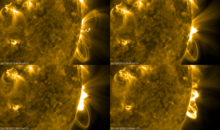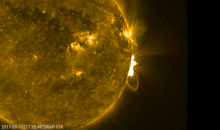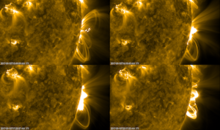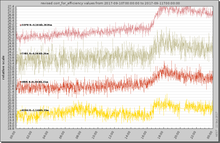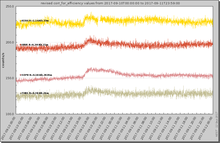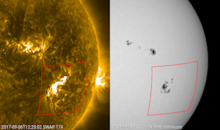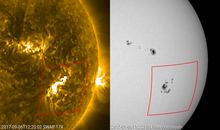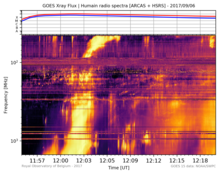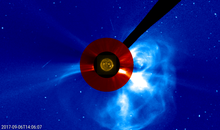news
Submitted on 2017-11-17
The SIDC team is pleased to announce a new release for STAFF, a solar timeline viewer.
Submitted on 2017-10-19
Two strong coronal mass ejections emanated from behind the Sun's east limb on 18 October and may herald more active solar conditions in the days ahead.
Submitted on 2017-10-16
A compilation of the most memorable space weather moments of 2016 can be found underneath. A ***MOVIE*** was created containing one or more clips of each event.
Submitted on 2017-10-11
After two months of increased solar activity, the Sun has turned spotless again on 8 October.
Submitted on 2017-10-04
The PROBA2 team is happy to announce the release of a new data product: the O+N2 Earth atmosphere number densities derived from PROBA2/LYRA occultation data.
Submitted on 2017-10-04
An artist's impression of ESA's Solar Orbiter in front of a stormy Sun. The spacecraft is currently being prepared for its 2019 launch from Cape Canaveral, USA.
Submitted on 2017-09-28
Earth is currently (28 September) under the influence of a high speed stream from a coronal hole. A strong geomagnetic storm is in progress. Polar lights will not be visible from Belgium.
Submitted on 2017-09-21
Some additional and impressive images of the two strongest flares that NOAA 2673 produced.
Submitted on 2017-09-11
September 10, 16:06 UT, another extreme light flash was seen on the solar disk. At the same time, a plasma cloud with an extreme fast speed was ejected. On top of this, a proton storm bombarded Earth. The impact of the proton storm could be measured at the surface of the Earth!
Submitted on 2017-09-07
The Sun is pushing its activity to still higher levels. On Sept 6, we could witness a very strong light flash on the Sun. Here on Earth, our radio, GNSS and PROBA2 team went wild because of the impact in their data!
Pages
Zircon - This is a contributing Drupal Theme
Design by
WeebPal.


